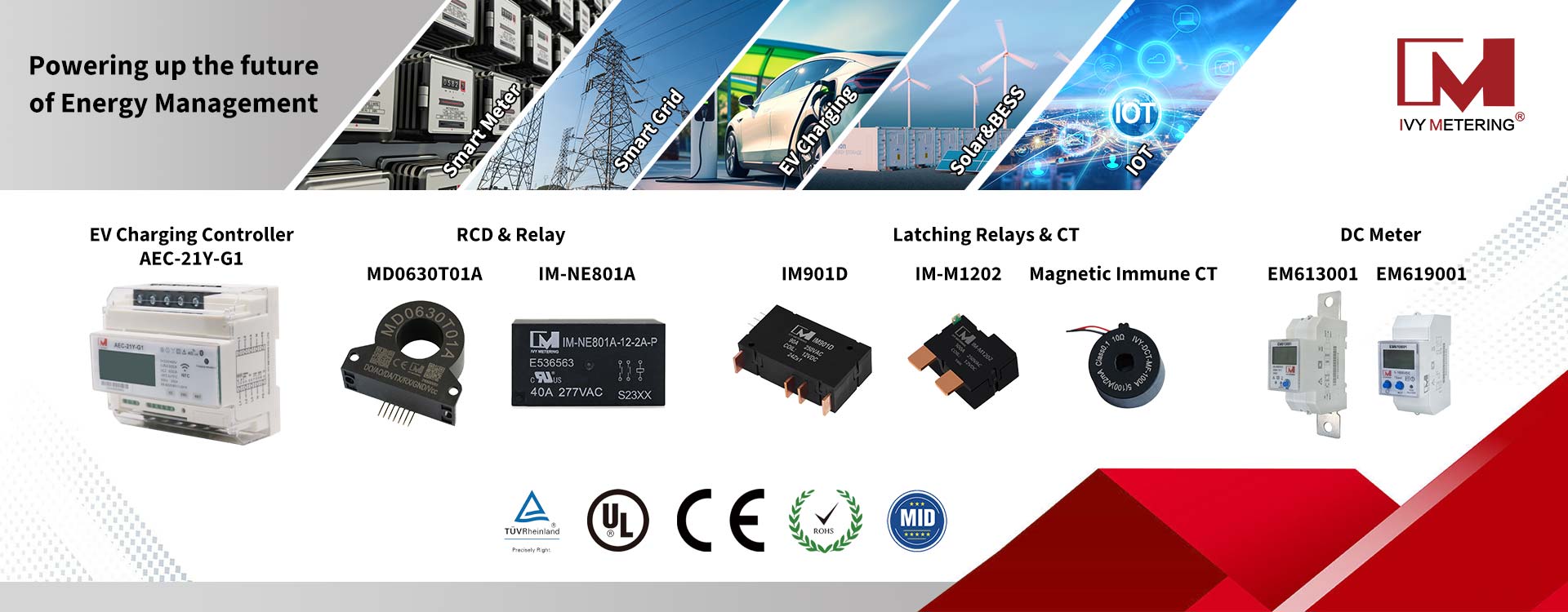EVSE Residual Current Protection Leakage Detector
Residual Current Protective Devices (RCD), as a leakage protector, is widely used in low-voltage power distribution systems to prevent electric shock accidents, leakage damage to electrical equipment and electrical fires. Also in the field of electric vehicle charging, RCD is also widely used as a basic electrical protection device. What is a Type A or Type B residual current protector?
RCDs can be divided into AC type/A type/B type according to the residual current type.
1. AC type leakage protector
The AC type leakage protector is developed and designed for the power frequency sinusoidal leakage current, and can reliably protect the sinusoidal leakage current that is suddenly applied and slowly rising.
2. Type A leakage protector
Including the characteristics of the AC type and adding 6mA smooth residual current to the pulsating DC residual current and the pulsating DC residual current to ensure the tripping RCD.
3. Type B leakage protector
Including the protection characteristics of Type A, in addition, it can also superimpose the sinusoidal AC residual current of 1000Hz and below, the AC residual current superimposed smooth DC residual current, the pulsating DC residual current superimposed smooth residual current, and the pulsating DC generated by the two-phase or multi-phase rectifier circuit. Residual current, smooth DC residual current ensures tripping RCD.
Mode 1 uses a charging connection cable to connect the electric vehicle to the AC grid. The residual current protection mainly relies on the residual current protection device (RCD) in the building distribution box. Since it cannot be guaranteed that all existing building installations are equipped with RCDs, this method Very dangerous and has been banned.
In mode 2, an on-cable control protection device (IC-CPD) is installed on the charging connection cable, and the IC-CPD has a residual current detection protection function inside.
Mode 3 uses the power supply equipment to directly connect the electric vehicle with the AC power grid, and installs a control and guidance device on the power supply equipment, which is the AC charging pile.
In mode 4, when the electric vehicle is connected to the AC grid or the DC grid, a DC power supply device with a control and guidance function, that is, a DC charging pile is used. Here, we mainly discuss the selection of residual current protectors in Mode 3 and Mode 4 charging piles.
With the increasing popularity of electric vehicles, there are more and more applications of electric vehicle charging systems, and the safety and reliability of the charging process are very important.
During the charging process using the AC charging pile, when the insulation between the internal circuit board of the charging pile and the equipment shell is damaged, a pulsating DC residual current may be generated in the rectifier part. If DC leakage occurs, my country's low-voltage power distribution system generally adopts TN form of power supply, and the metal casing of the equipment is connected to the working zero line. The DC leakage will be fed back to the charging line through the body and PE line, which will affect the current waveform of the entire system. Due to the existence of the TN system, this kind of fault will not form a large voltage on the body, which is less harmful to the human body. However, if the ground wire of the connecting system is missing or the PE wire is disconnected, then this part of the voltage will harm the human body. In fact, in many places in China, especially in rural areas, there are problems with the connection of PE wire and ground wire. The existing A-type RCD can only detect the pulsating DC leakage without being disturbed by the DC 6mA current, but cannot detect the DC leakage and disconnect the protection. When the DC leakage is greater than 6mA, the DC residual current will cause the magnetic core to be pre-magnetized. , so that the tripping value increases, so that the A-type RCD cannot operate normally, so the A-type RCD must add a DC6mA DC residual current monitor or use a B-type RCD for protection.
The MD series (MD0630T01A/MD0630T41A/MD0630T41A-1/MD0630T01A-2) residual current monitor can be used to monitor the DC residual current of more than 6mA that may occur in the AC charging facility in charging mode 3. Set the leakage current alarm threshold and read the real-time leakage current through UART serial communication. When the detected leakage current exceeds the alarm threshold, the leakage alarm signal (high and low level digital signal) and switch control signal (optical coupler switch signal) will be output at the corresponding port. ). According to the relevant requirements of the IEC61851 standard, this product is an RCD device with Type B leakage protection, which provides protection against ground faults that may occur in AC charging facilities in charging mode 3.












